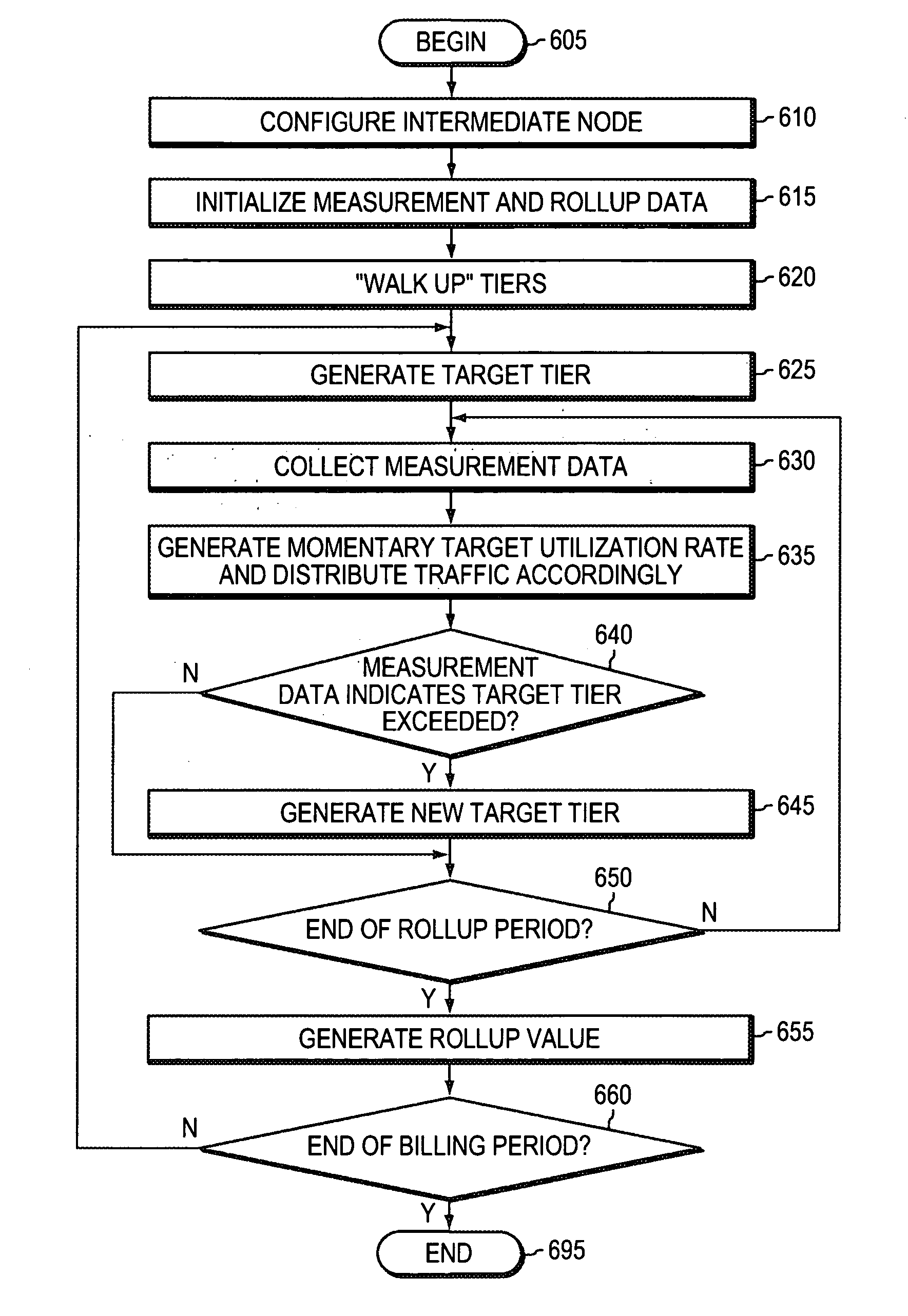Route optimization of services provided by one or more service providers for combined links
a technology of service provider and combined link, applied in the field of cost minimization, can solve the problems of not being able to achieve significant cost savings, not being able to synchronize the billing period of different sps, and complicating the effort to maximize usage, so as to minimize the cost of services provided, and minimize the cost
- Summary
- Abstract
- Description
- Claims
- Application Information
AI Technical Summary
Benefits of technology
Problems solved by technology
Method used
Image
Examples
Embodiment Construction
[0037]FIG. 2 is a schematic block diagram of a computer network that may be advantageously used with the present invention. Computer network 200 comprises a customer network 220 coupled to a wide-area network (WAN), such as the Internet 280, via a plurality of service providers (SPs) 270 to create a network of internetworked nodes. Specifically, the customer network 220 comprises one or more end nodes 210, coupled to an intermediate node 300, such as customer edge (CE) intermediate node 300, via a local-area network (LAN) connection 240. Intermediate node 300 is coupled via one or more WAN communication links 230 (e.g., 230a-c) to each service provider 270 that, in turn, is coupled to the Internet 280 via communication links 240. Each service provider network 270 may contain one or more network nodes (not shown), such as aggregation routers, that are interconnected via various communication links to form a data network that enables customer network 220 to access the Internet 280. Th...
PUM
 Login to View More
Login to View More Abstract
Description
Claims
Application Information
 Login to View More
Login to View More - R&D
- Intellectual Property
- Life Sciences
- Materials
- Tech Scout
- Unparalleled Data Quality
- Higher Quality Content
- 60% Fewer Hallucinations
Browse by: Latest US Patents, China's latest patents, Technical Efficacy Thesaurus, Application Domain, Technology Topic, Popular Technical Reports.
© 2025 PatSnap. All rights reserved.Legal|Privacy policy|Modern Slavery Act Transparency Statement|Sitemap|About US| Contact US: help@patsnap.com



